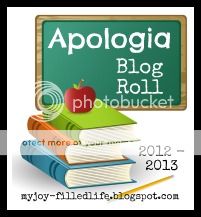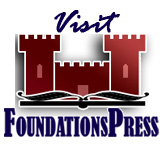(Originally written in 2001, when my oldest son was in kindergarten, to give some advice to a friend …)
Hi, friend…
My dishes are done and my laundry is folded, so now I can play for a few minutes. I’m going to try to write down my favorites for homeschooling in every area I can think of, to help you get started. Okay, let me go down through the subjects in the order we do them each day.
Bible
I’ll start with Bible. We are reading through a Bible story book this year, just to familiarize them with basic Bible stories. We’re using The Bible in Pictures for Little Eyes, by Kenneth N. Taylor. The stories are very short and each have about 3 questions to ask at the end. Then we memorize a Bible verse each week, one for each letter of the alphabet. Of course, these are the same letters that we’re working on in phonics each week. By the time we’ve said this verse 2 or 3 times each day, the kids know it well at the end of the week. Easy!
Read-Alouds
Okay, next we read fun stories. This is couch-snuggle time. We read a silly poem, then we read a chapter from a book. This helps attention span skills, plus it’s fun to keep the suspense up from day to day. Many times I let my son play quietly on the floor while I read out loud, as long as he’s paying attention. If we come across a word he doesn’t know the meaning of, I simply read the word and then quickly explain its meaning. See your Sonlight catalog for some great books, but I also like any old Bobsey Twins books, etc.
History and Science
Next is history, then science. I really think for the early grades, you could simply use the library. Sonlight is famous for correlating the topics being studied for history, read-alouds, writing, fiction (reading practice), spelling, vocabulary, grammar, you-name-it. But there are many other curriculum companies who also do that — AND, you could do it yourself!
For history, we are using Usborne books. Basically, the point is to acquaint your kids with people and civilizations and geography from all over the world. Usborne does a great job at this. For science, we read and study a certain topic for several weeks (for instance, a fish study for one month). Every Friday, we use an Usborne book and do simple science experiments (stuff we can do with in the kitchen and with things we already have around the house). It might be good to have the kids draw a picture once a week of everything they’ve learned, maybe telling you a sentence or two to write on the bottom of the paper – then store these in a binder for your “portfolio.”
Note: Since 2001, we have developed our own history curriculum. We currently use Jeannie Fulbright‘s science curriculum (published by Apologia.)
Math
Next is Math. But Ruth Beechick’s books are very helpful here, and you really don’t need any curriculum at all. If you wanted something that was already laid out, ABeka’s Numbers K book is simple and easy to use.
Phonics
Next is Phonics. Like I said earlier, we do a letter each week. This is the order we’re learning them in: F, B, M, T, R, A, H, P, S, I, C, D, J, O, N, K, L, U, V, W, G, Y, E, Z, X, Qu. (See my “Learning to Read” download.) Let me describe exactly how we do this:
On Monday, I write the letter (upper & lower case) on a piece of paper. Then we cut out five or six pictures that begin with that sound. You could use magazines, but really it might be easier to find clip art and just print it off. For instance, for F you might cut out “frogs” and “flowers” and “farms.”
On Tuesday, we look at a children’s picture dictionary at all kinds of things that start with that week’s letter. As they learn vowels (starting with a in bat), we begin to make short, 3-letter words to practice reading and writing. We have alphabet magnets and make words with those. We also have a slate, a white board, and a big pad of blank paper — all to give variety to this.
On Wednesday, we play a game with the letter sounds, such as an alphabet Go-Fish, “I Spy” (“I spy something that begins with F…”), alphabet bingo, puzzles, etc.
On Thursday, we do the same thing as Tuesday, although as they learn more letters, we might start to make short sentences, such as “Sam has a bat.” A great book to use if your kids have trouble blending their letter sounds is Teach Your Child to Read in 100 Lessons.
On Friday we read stories. Early in the year, I read simple reading books aloud to them, putting my finger under the words and showing them by example how to read a book. After they can sound out more words themselves, you could use Bob! Books. They’re great!
If you wanted a workbook for extra practice (not necessary, but my kids like it), you could use Get Ready for the Code, Get Set for the Code, and Go for the Code (all part of the Explode the Code series). These are fun. There are ten or so pages for each letter, so it’s simple to divide them into 5 days (or whatever). They include lots of things to color, circle and point to. Easy on the motor skills!
Handwriting
For handwriting practice, I would recommend just having them spend 2 days on the lower-case letter, 2 days on the upper-case, and maybe the extra day on numbers, mazes, whatever needs work. Get a blank piece of paper, draw a baseline, carefully write 2 or 3 letters for them to trace over, then let them write 2 or 3 on their own. If they have trouble with motor skills or dyslexia (common at this age), try filling a plastic storage container with sand or rice or cornmeal, and let them draw in it with their fingers. It is easier to write big than little at this age.
Everything Else
The only thing left in our day is extra stuff. A great book is Language and Thinking for Young Children, by Ruth Beechick, of course! This book includes stories, vocabulary and thinking skills, language games, memorizing, learning about telephones, enjoying poetry, manners, and learning on trips. It’s a very helpful book. Some days we do this, some days we don’t.
Well, that’s about it. Most of the books mentioned above can be purchased through amazon.com, but you might also want to check the Sonlight catalog and Rainbow Resource (you may want to just order a catalog… their website is huge and hard to navigate, I think).



Speak Your Mind